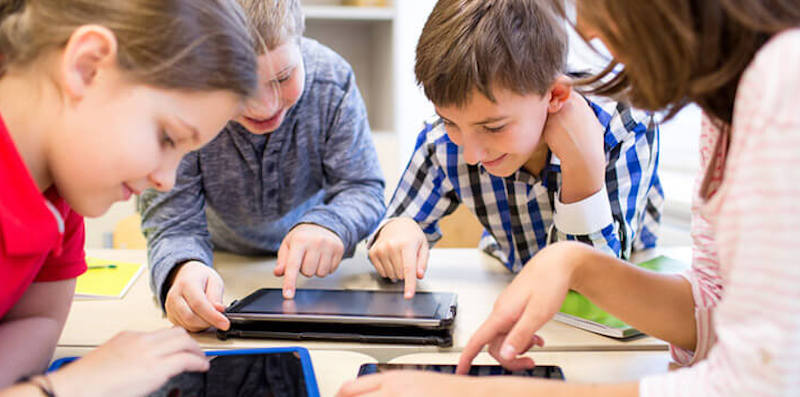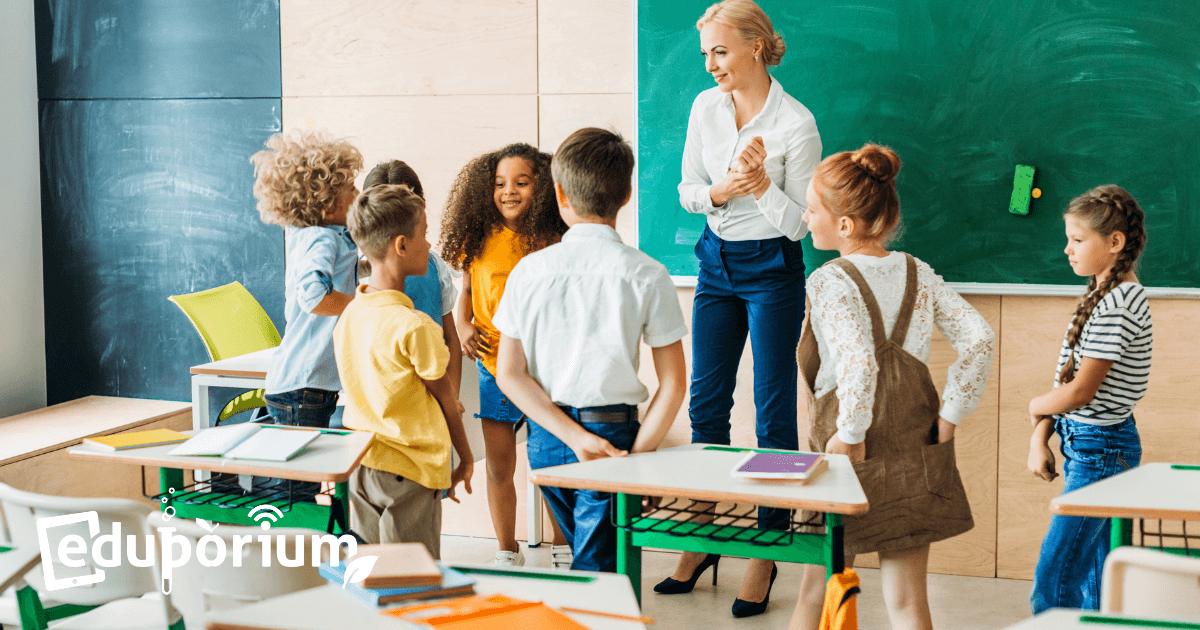There are many ways for students to show that they've absorbed key academic concepts and understand facts, figures, or lessons. While these students may learn best in entirely different ways, the only thing that matters in the end is mastery. Especially with extended efforts in personalizing education, students with different learning styles have had chances to explore what works best. In the education community, there are four central learning styles that are widely recognized. These include visual learning, auditory learning, kinesthetic learning, and reading and writing. Almost every student falls into one of these categories and, as you might guess, kinesthetic learning is most often associated with hands-on STEM experiences.
Teaching students who are visual learners.
The first of these four learning styles is visual learning. These types of students prefer navigating classroom instruction by seeing and observing new topics and concepts. One reason that some students prefer visual learning is stronger understanding and retention when information is presented visually. This often involves teachers increasing the number of pictures and diagrams they use or incorporating whiteboards or a smart board to display this information, whether they draw it themselves or show external resources.

When designing STEAM activities for visual learners, it's very helpful to highlight the 'A' and have them get artistic. When they get to draw diagrams or pictures or simply doodle their current thoughts, educators can get a better understanding of how well visual learners are grasping key concepts. Students could even use a tablet or any online drawing program to accomplish this. Those who prefer this learning style even benefit from self-paced learning, which allows them time to process material more effectively. Remember to keep that in mind when designing STEM lessons for the classroom.
Adapting for students with auditory learning styles.
Next, we have auditory learning and this learning style is, of course, kind of similar to visual learning. Kids who seek out auditory learning opportunities simply prefer to receive educational content by way of sound. Like in many traditional classrooms, this often involves lectures and verbal lessons instead of visual cues or hands-on exploration. Hearing educators say the key messages they need to know and, particularly, taking notes in the process, helps these students better process and retain content. Also, auditory learning helps teachers foster collaboration since these students usually enjoy speaking up and sharing ideas.
To integrate STEAM opportunities for auditory learners, teachers can focus on the collaboration aspect. As we know, collaboration is one of the most important soft skills and working together is huge in the STEM careers that students might consider. After presenting students with background information, for example, teachers may assign a hands-on STEAM project to different student groups. This creates chances to apply their preferred learning styles or share ideas in real time while collaborating to achieve success. Finally, the teachers could ask students to communicate how they're applying the background information and share discoveries to confirm understanding.
Teaching kinesthetic learners in the classroom.
As we said, the kinesthetic learning style is the one we most closely relate to STEM education. Kinesthetic learning often involves students learning through experiences and learning by doing. In STEAM learning, in particular, this can involve a deep list of possibilities from engineering a structure to programming a robot and even exploring a whole new world in virtual reality. The other important piece of kinesthetic learning is incorporating tactile elements. In STEAM projects, students are often using their hands—even if only using digital tools without the physical counterparts. Using their hands to touch and handle things, students who prefer the kinesthetic learning style can grasp concepts most effectively.

One of the best ways educators can impact kinesthetic learners is to help get them moving. This is perfect for STEAM education since these hands-on classroom activities may require them to move around anyway. Whether using educational robotics tools, other classroom coding solutions, circuitry kits, or something else, kinesthetic learners love learning up close. Pacing also helps them develop new skills and, once they repeat certain experiences, they can sometimes understand them more easily. With so many connections to the kinesthetic learning style, STEM education is great for kids with this preference.
The reading and writing learning styles.
Finally, the last one among the big four learning styles is reading and writing. Students who are reading or writing learners tend to prefer to learn using written words. It's similar to visual learning but separated by the fact that these types of students do genuinely enjoy expressing themselves while showing knowledge. And, they may choose to do this through reading articles or books or writing stories or diary entries. So, in terms of STEM learning, teachers can combine reading and writing experiences with the active kinesthetic experiences and encourage students to jot down their thoughts, emotions, challenges, and whatever else comes to mind after they complete a hands-on activity.
While it's sometimes easier to cater to these types of learners, focusing solely on writing reports and doing research isn't necessarily aligned to developing creative skills for the future. Of course, there isn't anything wrong with preferring this style of learning but, in an era in which technical skills and analytical thinking are paramount, tying reading and writing to creativity and exploration is, a lot of the time, ideal. The good thing is that, with preparation, educators can find ways to weave in STEAM learning for all their students. And, it often begins with giving them the freedom to explore and create on their own terms.
Getting started with effective learning experiences.
Some students may find they prefer visual learning because it helps them paint an authentic representation of concepts in their minds. Others might enjoy trying something new and discover that kinesthetic learning is for them since it helps them to use their senses and explore in the real world. Ultimately, there aren't any right or wrong preferences when it comes to learning styles and, with so many effective classroom STEM resources available, teachers at all grade levels can find great tools for engaging each type of student. To explore our offerings, including classroom robots, makerspace supplies for education, and even social-emotional learning technology, check out our store. Please reach out to us with questions on aligning EdTech tools with certain learning styles as well. And, follow us on Twitter and Instagram for more.



